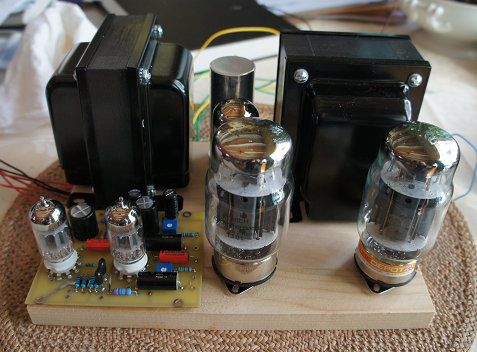 by turbotoy Sat Mar 07, 2015 3:26 pm
by turbotoy Sat Mar 07, 2015 3:26 pm
Sorry, let me attempt to better explain what is physcially happening and answer your question.
Forget about heating up and down, holding heat, etc. That thought process concerns the transient response of a system. During operation of an amplifier, we turn it on, the components warm up, and steady-state equilibrium is reached.
Consider the space inside of the can to have a heat source due to the transformer. Heat will be removed from this internal space by flowing through the can thickness, and will be transferred to the environment from the outer surface of the can through convection and radiation. To keep the problem simple, let us assume that the outer surface of the can is at an equilibrium temperature of To, and the inside surface of the can is at Ti. In differential form, Fourier's Law of conduction states:
q = -k(dT/dx)
where:
q is the heat transfer rate
k is the thermal conductivity
dT/dx is the temperature gradient through the thickness of the material
In this case, x is the thickness of the can material. Now imagine that in the above equation, q is held constant. If k is increased, the temperature gradient, dT/dx is decreased. Assuming the outside of the can is at To, that means that as k is increased, Ti will be reduced and become closer to To. This ignores many other important aspects of the actual heat transfer process, but hopefully explains the concept of conduction.
In practice, the material selected for the can will not affect the temperature of the transformer much. Why? The thickness of the can is relatively small, so the temperature gradient through the can thickness will be low. In other words, whether aluminum or steel, the inside surface of the can will be at close to the same temperature as the outside surface of the can. The color and surface roughness of the can, which affect the heat removed by radiation and convection, are likely more important parameters.
So, aluminum would theoretically be the better material choice, but in practical terms it probably does not matter at all in this application.




